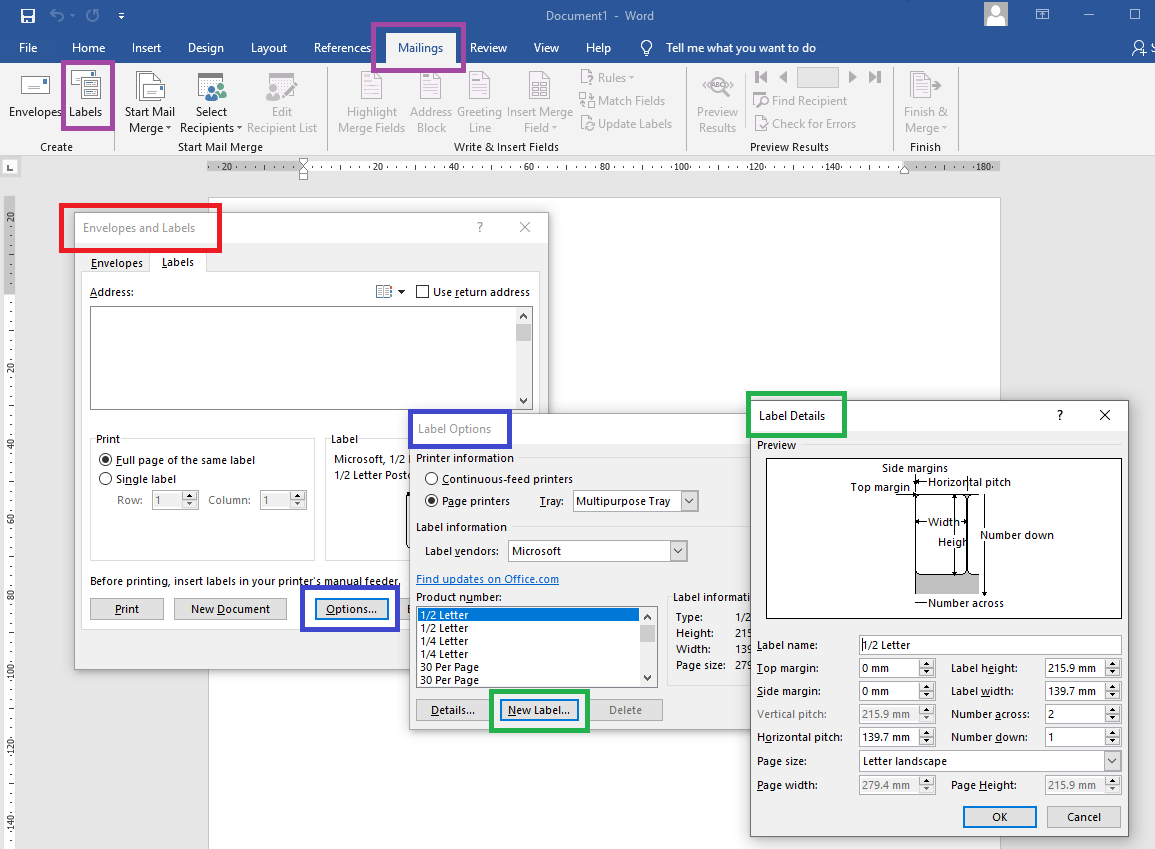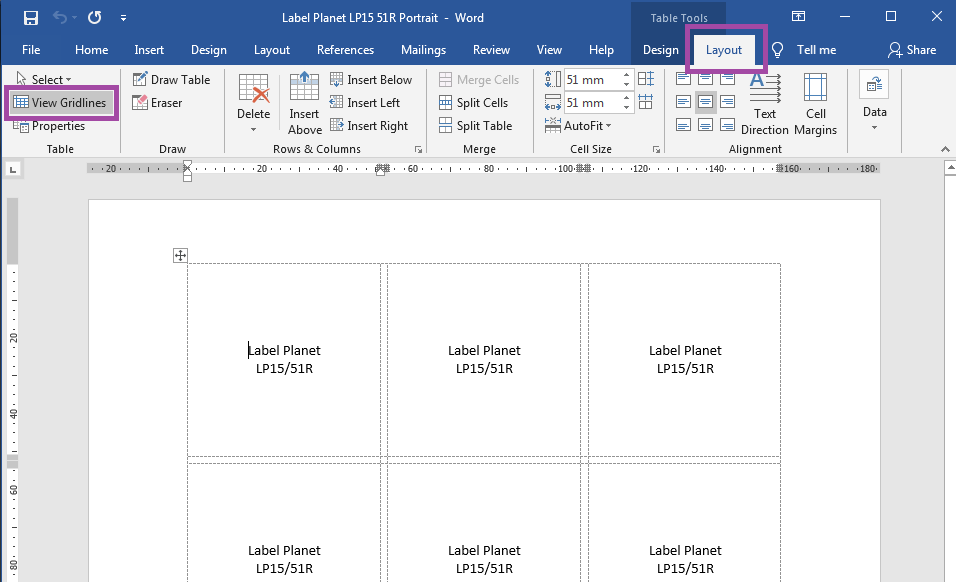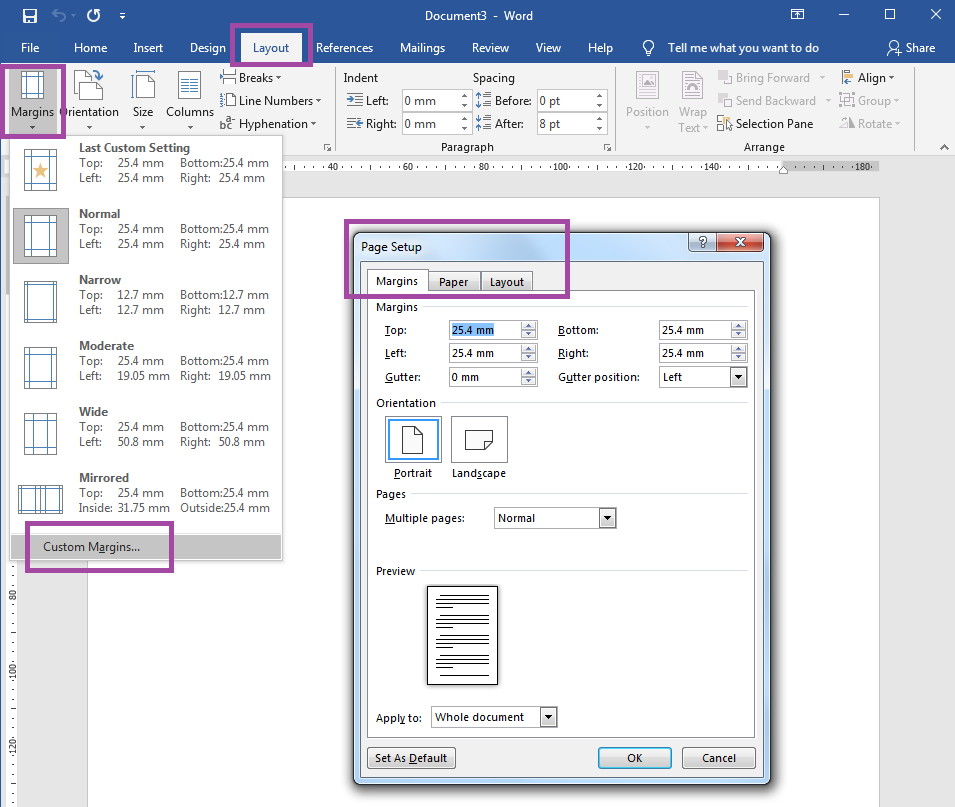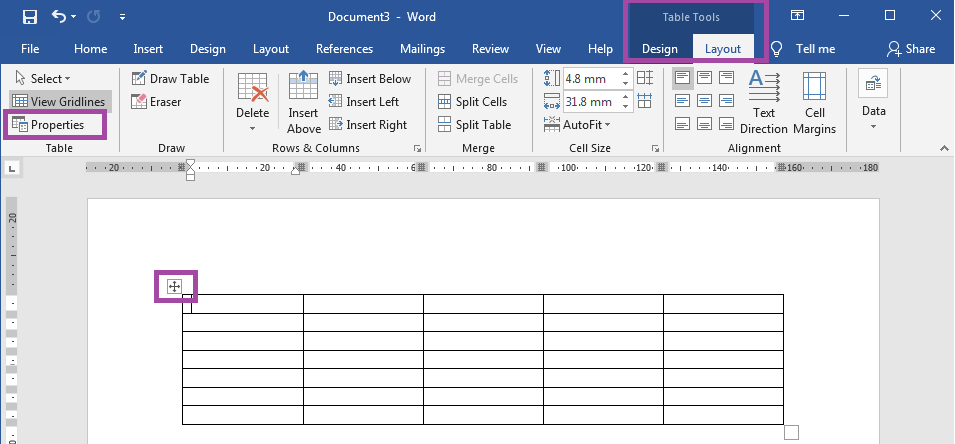How To Change Label Size In Word
Template Tuesday Presents...how to create label templates in Word using Create Labels & Insert Table tools.
(Visiting from America? Cheque out our guide to creating label templates for American label sizes.)
How To Create A Characterization Template In Word Using Create Labels
With "Create Labels", you enter the measurements of your sheet labels and the tool automatically creates a suitable label template. You will need the following measurements:
- Page Size (and Orientation)
- Page Margins (Pinnacle Margin and Left Margin)
- Label Meridian and Width
- Vertical Pitch and Horizontal Pitch
- Number of Labels Per Row (Across) and Per Column (Down)
To start the Create Labels tool, open up a new bare document in Give-and-take. Click on the Mailings tab and select Labels (on the left paw side). This opens a dialogue box called Envelopes and Labels. To create a template:

Step 1: Click on Options; this opens a dialogue box called Label Options.
Stride ii: Click on New Characterization; this opens a dialogue box called Label Details.
Step three: Enter your required measurements. We recommend using this order:
- Page Size (& Orientation) – A4 is 210mm by 297mm.
- Labels Beyond & Labels Downward – number of labels in each row and cavalcade.
- Label Width & Tiptop – for circular labels, enter the diameter into both fields.
- Vertical Pitch & Horizontal Pitch – these are label height plus row gap height and label width plus column gap width respectively. If there are no gaps enter just the label height or width.
- Pinnacle Margin & Side (Left) Margin – if Word takes consequence with the measurements you've provided so far, set all the margins to 0mm, enter your other measurements over again, and and then add in your margins.
Step 4: Requite your template a proper noun, and click OK. This returns you lot to Label Options.
Step 5: Click on OK; this returns y'all to Envelopes and Labels.
Footstep 6: Click on New Document; this opens a new certificate containing your template.
Template Tuesday Top Tips For Using The Create Labels Tool
- Give-and-take templates represent sheet labels using a table. Each prison cell represents a label (or a gap between labels). They tin only stand for labels as a grid of rectangles and/or squares; they cannot prove any shaping, including oval and round labels or rounded corners on rectangle and square labels.
- The table is borderless so it doesn't get printed along with your designs. Its outlines volition be shown as dotted grey lines. If y'all cannot come across the table, Table Gridlines are turned off. Left click once anywhere in the middle of the page to bring up the Table Tools Layout tab at the peak of the page. Click on the View Gridlines button on the left hand side.

- Enter your measurements (except number across/down) equally a value, followed by a single blank space, followed past the measurement unit symbol. For example: "lxx mm".
- Word uses centimetres by default. Characterization measurements tend to utilize millimetres. You tin can stick with centimetres (and convert the measurements) or alter Give-and-take's measurements to millimetres.
Discussion: Click on File, Options, and Avant-garde. Curlicue to Display and set "Show Measurements in units of" to millimetres.
Word For Mac: Click on "Word" in the menu bar and select "Preferences". Select "Full general" from Authoring & Proofing Tools, and fix "Measurement units" to millimetres. - After creating your template, save a copy before adding your pattern.
How To Create A Characterization Template In Word Using Insert Table
As Discussion templates are basically tables, you can only create a tabular array that replicates your labels. You volition demand the same measurements as higher up BUT you will need row gap heights and cavalcade gap widths (rather than vertical and horizontal pitches) and all four folio margins. There are ii stages: creating a suitable starting document and adding a suitable tabular array.
Create A Suitable Starting Certificate
- Open a new blank document in Word. This creates a portrait A4 folio. To create a landscape template, click on the Layout tab, then on Orientation, and select Landscape.
- Side by side you demand to enter the right measurements and margins for your page. Click on the Margins option in the Layout tab and select Custom Margins. This volition open up a Page Setup dialogue box.
- On the Margins tab, enter your top, bottom, left, and right page margins and ready the gutter margin to 0mm.
- On the Paper tab, check that the page size is A4 with the measurements 210mm and 297mm.
- Finally, on the Layout tab, set the header and footer to 0mm. Click OK to make your changes.
Word may at present warn yous that your margins are "exterior the printable expanse". You can ignore this warning. If Give-and-take splits your table onto two pages (or adds a blank page), set the bottom margin to 0mm.

Add A Suitable Table
- Click on the Insert tab at the top of the folio. Select Table and Insert Table.
- Enter the number of rows and columns you need and printing OK.
- If there are no gaps between your labels, enter the number of rows and columns.
- If there are gaps, you can correspond them with additional blank rows and columns OR incorporate them into the rows and columns that stand for their own rows and columns where possible. And so, for example, if y'all have three columns with gaps, you need a table with five columns (iii representing the labels themselves and ii representing the gaps).
Editing Your Tabular array
This adds a generic table; it needs amending to create a suitable template. Move your cursor to the top left corner of the table and left click on the four headed pointer icon that appears to select the tabular array. Make these changes:

- Remove Borders; select the Table Tools Pattern tab, click on Borders, and select No Borders.
- Prepare Table Properties; select the Table Tools Layout tab and click on the Properties button. Click on the Tabular array tab. Under size, set up the preferred width to the full width of your labels (i.e. from the left border of the kickoff column to the right border of the last cavalcade). Under alignment, select "Center". Click on Options, set cell margins and spacing to 0mm, and turn off "automatically resize to fit contents".
- Set Row Backdrop; click on the Row tab in Tabular array Properties. Under size, enter your label height and prepare information technology to "Verbal" (NOT "At least"). Under options, deselect both options. If there are gaps, use "Adjacent Row" to change each row height as needed.
- Gear up Column Backdrop; click on the Column tab in Table Properties. Under size, enter your characterization width. If in that location are gaps, use "Next Column" to change each column width every bit needed.
- Set Cell Properties; click on the Cell tab in Table Properties. Nosotros recommend a centralised alignment but this depends on your label pattern. Nether options, set cell margins to "Same as the whole table", select "Wrap text", and deselect "Fit text".
- Centralise Table; click on the Table Tools Layout tab and select the centre icon in the gear up of nine alignment options.
Finally, we recommend saving a copy of your blank label template before adding your design.
Next Week On Template Tuesday: Conflict Resolution – How To Make Sure Your Software & Your Template Are Compatible
How To Change Label Size In Word,
Source: https://www.labelplanet.co.uk/how-to/templates-news/how-to-create-label-templates-word/
Posted by: rouseingesed.blogspot.com


0 Response to "How To Change Label Size In Word"
Post a Comment